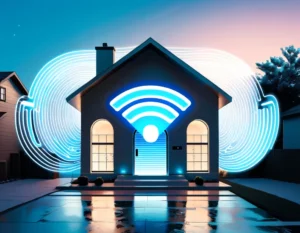The Evolution of Cellular Data: From 1G to the Future of Connectivity
Introduction
Mobile communication has come a long way since the 1980s. What started as basic voice calls on clunky devices has grown into the backbone of the digital world we live in today. This journey has been powered by the evolution of cellular networks—from 1G all the way to the emerging 6G and 7G technologies. Whether you’re an IT professional, network engineer, or just a tech enthusiast, understanding this progression helps you appreciate the innovation that fuels our hyperconnected society. In this post, we’ll break down how cellular data evolved across generations, what each brought to the table, and where things are headed next.
1G: The Analog Beginning
The story starts in the late 1970s and early 1980s with 1G, the first generation of mobile networks. These were analog systems that only supported voice calls.
Key characteristics of 1G:
- Voice-only service.
- Low sound quality.
- No data or encryption (calls could be intercepted).
- Bulky and expensive mobile phones.
Despite the limitations, 1G introduced the concept of making a phone call without being tethered to a landline, changing how people communicated forever.
2G: The Digital Revolution
In the early 1990s, 2G arrived. This generation switched from analog to digital signals. It significantly improved voice quality, security, and network capacity.
Why 2G was a game-changer:
- Introduced digital encryption.
- Enabled text messaging (SMS) and later multimedia messaging (MMS).
- Supported international roaming with the widespread adoption of GSM.
2G paved the way for the mobile devices we know today, as phones got smaller and more affordable.
3G: The Era of Mobile Internet
The early 2000s saw the rise of 3G networks. These networks brought data into the mix, opening the door to mobile internet access.
3G’s biggest contributions:
- Internet browsing on mobile devices.
- Email and multimedia content became accessible.
- Video calling became possible.
- Smartphones (think BlackBerry and the early iPhone) gained mass appeal.
3G transformed mobile phones into mini-computers, allowing users to stay connected wherever they went.
4G: The Broadband Leap
4G came in the late 2000s, and with it came true mobile broadband. The most common 4G standard, LTE, offered speeds that supported high-quality streaming and real-time applications.
Here’s what 4G delivered:
- High-speed data transfers up to 1 Gbps.
- Buffer-free video streaming and mobile gaming.
- Seamless video conferencing.
- Wider adoption of mobile apps like Uber, Instagram, and Spotify.
4G helped usher in the app economy and made mobile devices central to work and play.
5G: The Current Frontier
Today, we’re in the middle of the 5G rollout. This generation promises faster speeds, ultra-low latency, and support for massive IoT ecosystems.
What 5G is bringing to the table:
- Download speeds of up to 10 Gbps.
- Latency as low as 1 millisecond (great for applications like autonomous vehicles).
- Support for billions of IoT devices.
- More reliable networks for critical services like remote surgery and smart infrastructure.
5G is designed for much more than just your phone—it’s a network to power entire industries.
What’s Next? 6G and Beyond
While 5G is still expanding globally, work on 6G has already begun. Expected to roll out in the 2030s, 6G will likely focus on integrating AI directly into networks, enabling real-time optimization, and supporting terahertz frequencies for unprecedented data rates.
Some predictions for 6G and 7G include:
- Terahertz spectrum usage for ultra-fast speeds.
- Built-in AI to manage network resources autonomously.
- Global coverage blending terrestrial and satellite networks.
- Seamless human-machine interfaces (think brain-computer communication).
The next generations aim to connect not just devices, but entire ecosystems, creating a more immersive and intelligent digital world.
Closing Thoughts
The evolution of cellular data—from 1G’s static-filled calls to 5G’s blazing-fast internet—is a story of constant innovation. Each generation of wireless technology has redefined how we live, work, and connect. And with 6G and 7G on the horizon, we’re looking at a future where technology is even more integrated into everyday life.
References
- Ericsson. “History of Mobile Communications.”
- Qualcomm. “What is 5G?”
- IEEE Spectrum. “What Will 6G Be?”
- GSMA Intelligence. “The Mobile Economy Report.”



